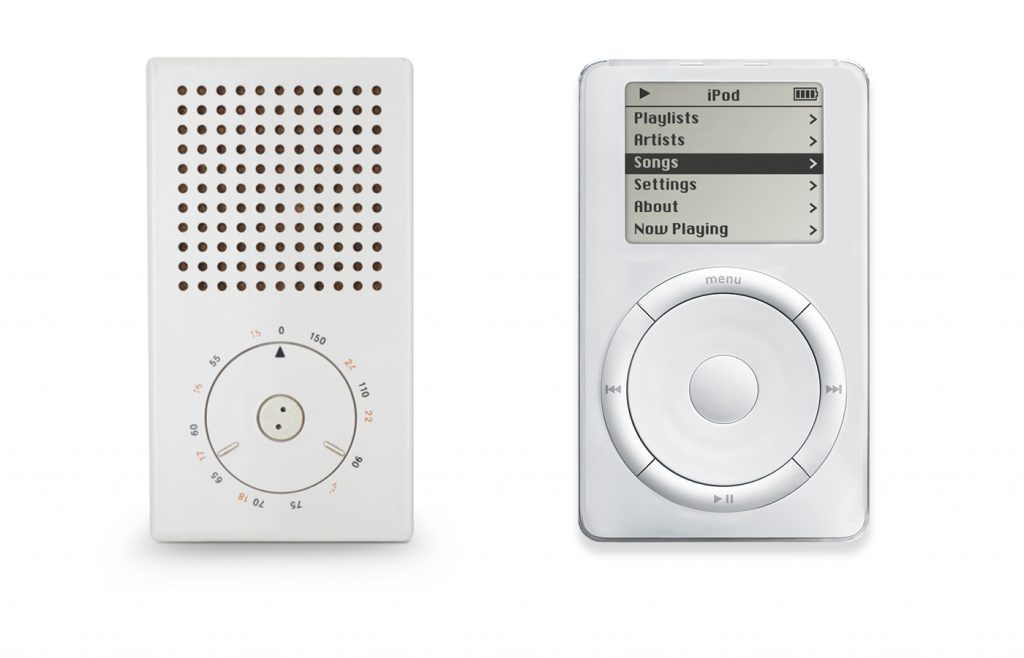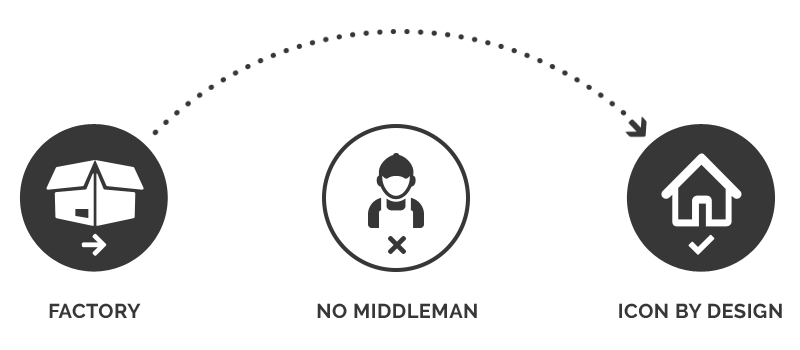In Part I, we examined the first ingredient of timeless design; how practicality must be a designer’s first port of call when creating a product intended for a specific purpose. But if every product’s sole purpose was simply to execute an intended purpose, what an an uninspiring world we would live in! So, while practicality may be the foundation of timeless design, aesthetics – we argue – are the building blocks. In this article, we’ll look at how the iPod solved a complex problem with simple design, and what lessons it offers us in achieving timelessness.
PART II: THE SIMPLICITY OF THE IPOD
“Good design,” said Dieter Rams, “is as little design as possible.” But, much like ladies’ makeup routines, there’s a lot of effort that goes in to looking effortless. Achieving simplicity is a complicated task; that’s why very few get it right. In a world where we are spoilt for choice to the point of fatigue, there’s a relief when we are able to interact with an object in a simple, uncomplicated way. We’ve chosen the iPod as a device that, through its simple interface, revolutionised the way in which we consume music. Indeed, the notion of ‘consuming’ music is largely due to the way in which Apple changed the landscape of the music market through the invention of the iPod.
It’s hard for even technology veterans like ourselves to remember a time before music was digital. Apple’s iPod was born out of the Millennium push for the digitalisation of media; photos, videos, and music were fast becoming intangible as the market’s desire for modernisation reached its peak. Because its design has become so infamous, the iPod is often wrongly credited as the first MP3 player. We often forget that MP3 players had been around for some years before Apple launched its digital music player. Tony Fadell, who managed the team responsible for the 1st Gen iPod, described the situation befalling the market at this time:
“CD’s are wonderful, but they only fit so many songs. There’s these other things called MP3 players out there, but at the end of the day you want to put 1000 songs on them – but they’re too slow, the battery life too short – how could we innovate?”
Fadell states that “the first secret of design is noticing.” It was in noticing a lot of the flaws in the existing digital music player products (that consumers had either struggled through, or become desensitised to), that gave Apple the lead on the competition:
“…we were not only trying to make [the iPod] as good as the existing technology, but make it so that you could have 1000 songs in your pocket, and you could put the 1000 songs onto it very quickly. You could quickly go between tracks, you could find the track you wanted – all of these things were the parameters we were designing around to make sure it was an incredible experience.”

L: Rams’ T3 Radio, designed for Braun in 1953; R: Jonathan Ive’s original iPod design
The iPod’s defining feature was its track wheel, that allowed users to scroll through their music library to find the song they wanted to listen to quickly and easily. The quote by Dieter Rams we used at the start of this article is actually of significance when it comes to discussing the iPod’s track wheel; Jonathan Ive, who managed iPod’s design team, was a disciple of Rams’ work, and based the wheel on his T3 Pocket Radio, designed for Braun in the 1950s. The wheel was a revolutionary solution to a troubling interface problem at the time:
“Other MP3 players used plus and minus buttons that would move, one item at a time, through a list of songs, which would grow tedious if the unit held a thousand songs—basically, you’d have to push the button a thousand times. With a wheel, a quick flick of the finger would navigate through the list at any rate the user wanted—especially since Apple would make the scroll speed accelerate the longer you spun the wheel.”
It wasn’t just the elements that Ive wanted to keep simple. At a time where bright, neon colours were all the rage (even within Apple – the Colour iMacs were a Millennial icon), the iPod’s restrained white and stainless steel set it apart from the competition – both externally, and internally.

Tech specs of the 1st Gen iPod
Released on October 23, 2001, the first iPod packed 5GB of music storage into a sleek white box no bigger than a deck of cards. It had no removable battery door, no on/off switch, no screws; the inner technological wizardry was sealed away from the prying hands of the user. What’s more, it didn’t need charging before use – the consumer could start using it right out of the box. All of these seemingly simple elements conveyed a powerful message: it just works.
SUMMARY
Successful simplicity is identifying the essential, and eliminating the rest. As the French writer Antoine de Saint-Exupery once said, “perfection is achieved not when there is nothing more to add, but when there is nothing left to take away.” However, there are plenty of simple products in the history of product design that haven’t captured the consumer’s imagination. Tony Fadell believes he’s landed on the reason as to why some beautifully designed products succeed, and others don’t:
“…there are two halves to design – just like there’s two halves to your brain: the emotional part, and the rational part. If you want people to adopt your product, it has to have an emotional component – something that grabs you,unlocks your curiosity… It also needs to rationally work. The rational features make the consumer want to buy a product. The emotional features make them actually buy it.”
Icon By Design ascribes to a clean aesthetic in all of its products, so simplicity is a crucial element of how we design. We believe, however, that the story behind our furniture is just as powerful. Being crafted from sustainably sourced, solid timbers, gives our products a tactile and emotional quality. As such, all our pieces are unique; a characteristic which we celebrate, and our customers appreciate.
While the iPod’s iconic silhouette has been added to the annals of timeless design, the harsh reality of technology products is their limited shelf life. For a furniture company like Icon By Design, quality craftsmanship is integral to our ethos; we reject the disposable society – instead offering products that are able to be cherished for generations. In Part III, we take a look at how quality craftsmanship has enabled the Burberry Trench Coat to stay current for over 100 years, in an industry renowned for its transience.






 1300 715 719
1300 715 719 Showrooms
Showrooms






















